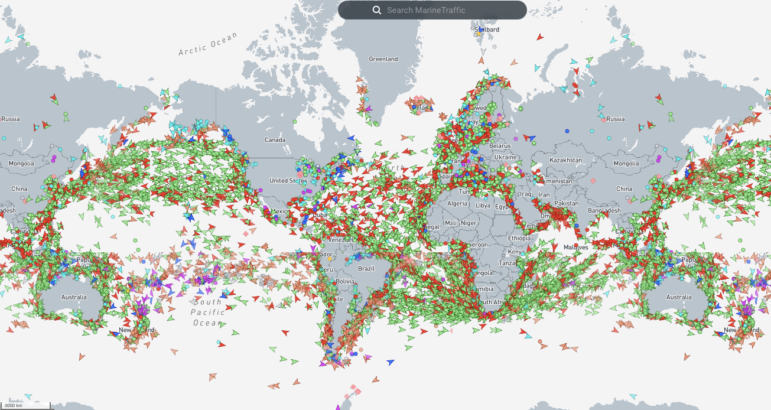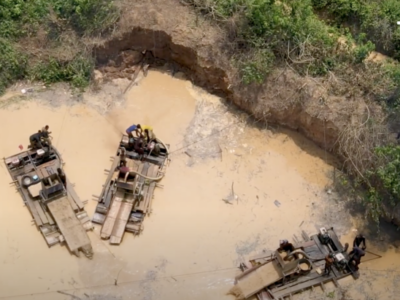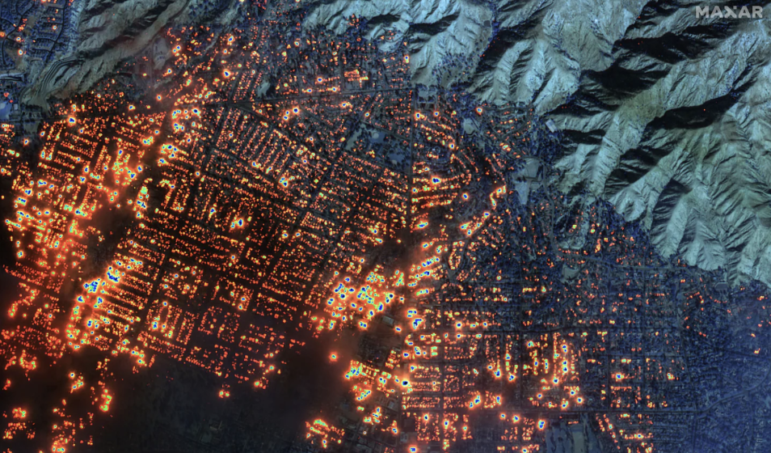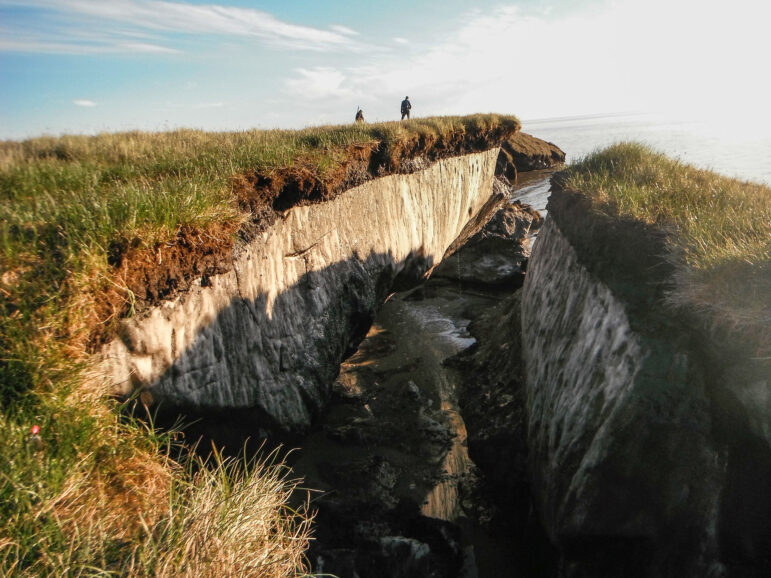
Fossil fuels run the world. The energy transition might be taking shape, and in some places renewables are growing rapidly, but sadly for the planet, oil, gas, and coal still dominate the global energy system. Despite all this, hydrocarbons can be extremely difficult to track.
This makes understanding climate change tougher as it weakens our capacity to accurately report on those firms and hold the fossil fuel industry accountable.
The oil and gas industry is complex and notoriously opaque. Its supply chains span the globe and are incredibly dynamic with the ability to quickly transform in response to wars, geopolitical tensions, and market forces. The redirection of Russian oil flows following European sanctions for its invasion of Ukraine in 2022 is just one such example of the flexibility of this system.
The companies involved in the oil and liquefied natural gas (LNG) trade — particularly the middlemen who trade oil on the high seas — are often privately-owned companies that generate billions of dollars in profits but whose operations are shrouded in secrecy. The tankers that carry the fuels we use every day through international waters are usually registered in low-regulation jurisdictions such as Panama and the Marshall Islands. And sometimes they transfer their cargo at sea out of sight of national government authorities.
To add complexity, products derived from oil and gas are extraordinarily diverse. Over 6,000 products can be produced from oil. This includes a wide array of fuels that are themselves are usually blends of multiple products, but also substances used in plastics, detergents, fertilizers, synthetic rubber, medicines, cosmetics, and even some clothing fabrics like polyester and nylon.
The Anti-Corruption Data Collective, along with Data Desk, one of our founding members, have conducted several investigations into oil and gas supply chains, including:
- A deep dive into Russian President Vladimir Putin’s favored mega gas project, Arctic LNG 2.
- How palm oil still fuels a major European oil producer’s refineries despite a phase-out pledge.
- How sanctioned oil makes its way into the Pentagon’s fuel supply.
- How European energy companies are connected to Russia’s military supply chains.
- The countries and companies providing Israel with crude oil and jet fuel.
Each of these stories has relied on different datasets and required the input of traditional source-based reporting, but there are a few themes that unite our stories and tools that underpin our approach.
Forbidden Cargo
A rich seam for supply chain storytelling is often around sanctioned oil and gas. Given the money at stake in the oil and gas trade, unscrupulous firms often have an incentive to dodge sanctions. There have been lots of stories in recent months about how the EU’s restrictions on the import of oil from Russia have been circumvented by inventive companies.
The key here is to closely monitor where sanctioned oil is going. You may want to monitor specific ports within a country that is subject to sanctions, or the tankers of a given company that has been targeted by restrictions. It would be great if this then became a matter of just following where a given tanker went, but things are usually more complex.
Our investigation with The Washington Post into how the Pentagon was likely getting jet fuel and naval diesel derived from Russian oil sanctioned by the US took months to uncover. (The Pentagon denied any knowledge that Russia was a possible fuel source and has since tightened its procurement rules.)

An explainer map for this complex supply chain, that secretly routed Russian oil through Turkey, then to a refinery in Greece, and was ultimately sold to the Pentagon. Image: Screenshot, The Washington Post
The Russian oil was travelling through a Turkish port before then being refined in Greece and sold to US bases. We were first put onto this when we observed that a Greek refinery that was previously reliant on Russian oil switched its supply to a little-known Turkish port, which itself was importing large volumes of Russian oil. This all happened in the wake of European sanctions that came into force at the start of 2023 and forbade European refineries from importing Russian crude oil.
In the wake of our investigation it appears no more Russian oil is transiting to this Greek refinery through Turkey, and the Pentagon has just updated its guidance on sourcing of fuel to better exclude sanctioned products.
Controversial Projects
The oil industry is both a site of tragedy and wonder. The products it makes are harming the planet, but the ingenuity of oil and gas engineering firms is matched by few other sectors.
Oil and gas extraction projects often deploy cutting-edge technology in some of the world’s most inhospitable environments in order to draw hydrocarbons from deep below the earth’s surface. Huge amounts of power, equipment, and scientific know-how are required.
A lot of our work focuses on projects that have been caught in the crosshairs of sanctions — effectively banning the export of high-tech equipment for its construction — and which are likely to have a substantial climate impact.
Last year we worked extensively on investigating the Arctic LNG 2 project, a massive liquefied natural gas project in the icy waters of northern Siberia. It is on a list of “carbon bombs,” a set of projects that are expected to contribute over one billion tons of carbon dioxide (CO2) to the atmosphere in their lifetime, significantly impacting the world’s remaining carbon budget.
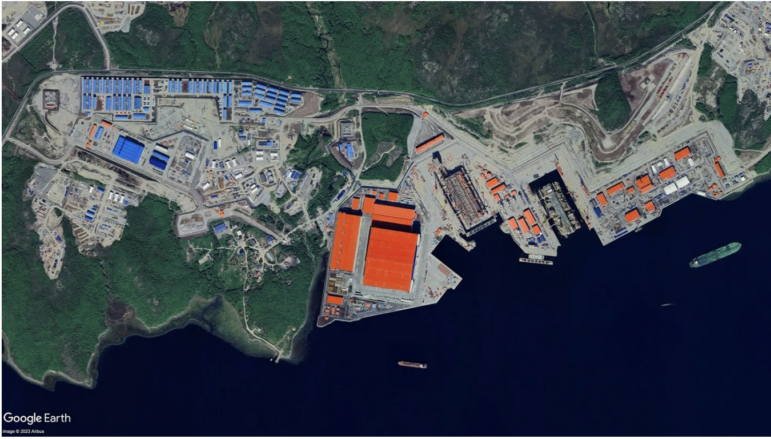
Novatek’s construction yard for Arctic LNG 2, at Belokamenka, near Murmansk. Satellite imagery: Airbus/Google Earth
When initially conceived, the project was set to incorporate the world’s most advanced gas turbines that would power the enormous compressors needed to convert the gas coming out of the ground into a liquid. The cargoes of liquid would then be carried away by ice-class LNG tankers capable of traversing the remote waters of the Northern Sea Route.
Arctic LNG 2 was strategically important as it was one of a small handful of massive projects that would enable Russia to get its vast hydrocarbon reserves to market now that its biggest customer, Europe, had turned its back on it following the country’s full-scale invasion of Ukraine.
Throughout 2023, we followed closely how European companies continued to facilitate shipments of high-tech equipment to the dedicated shipyard where the floating modules for Arctic LNG 2 were being built. This involved the review of hundreds of Russian customs records and thousands of pings from cargo ships’ safety transmitters. We worked with Le Monde to show that a French engineering company had continued to ship equipment after the sanctions had been announced.
Unreported Emissions
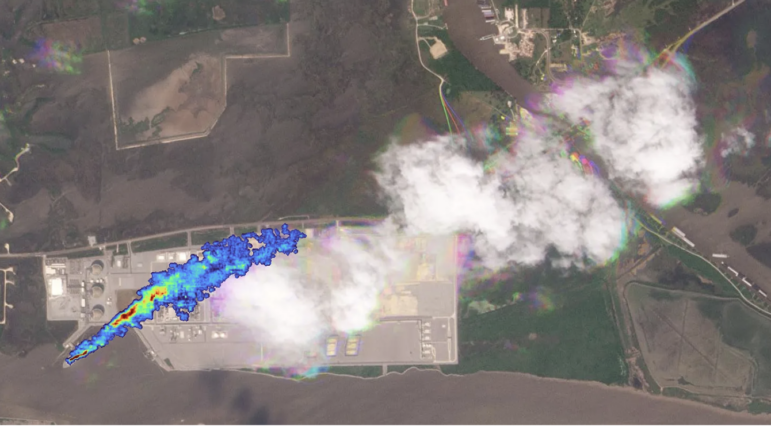
The Diamond Gas Rose tanker emits a plume of methane while docked at Louisiana’s Cameron LNG terminal, April 28, 2021. Plume data: Global Airborne Observatory via Carbon Mapper. Image: Planet
Journalists are often in the business of finding out about significant things that a person, government, or company has done, but which they’ve tried to hide. Hiding damaging emissions from industrial activities was previously rather easy as the gases involved are invisible to the human eye and, until recently, companies in most places weren’t expected to publish much detail about what they emit.
This is all changing, not least because a data revolution is underway. Previously invisible plumes of methane — a potent greenhouse gas — are now becoming visible from space. A fleet of satellites — some philanthropically funded — are now sending data back to Earth on the location of serious leaks with huge warming potential.
Methane itself is responsible for 30% of global warming since the industrial revolution. Major sources of methane include landfills, farms, and leaky oil and gas infrastructure.
Previously, companies have been under very little pressure to account for these emissions. That is changing as a result of initiatives like the Global Methane Pledge, in which countries representing 45% of global methane emissions have pledged to reduce their emissions by 30% by 2030.
Services like CarbonMapper provide easy-to-use data and visualizations on methane plumes detected by the International Space Station and the Tanager 1 satellite, as well as data collected by aircraft flyovers. This is a huge opportunity for investigative and environmental journalists to spot unreported leaks and call out so-called super emitters.
Our Favorite Tools
Ship Tracking Services
One of the best ways of monitoring where oil and LNG is going is by tracking tankers. The last few years has seen an explosion of services that let you check the location of vessels in near real time.
All commercial vessels are supposed to emit an Automatic Identification System (AIS) signal at regular intervals for safety reasons. These signals are picked up by other ships and coastal receivers, but also by satellites, enabling anyone to see the location of the world’s maritime fleet on their mobile phone even when these ships are in the middle of the ocean.
Services such as MarineTraffic let you see not only where a tanker is but also how deep it is in the water through its “draught,” which means you can make inferences about whether it is carrying a cargo or sailing empty.
Taking this a step further, services like LSEG and Kpler have models that make inferences about the specific commodity on a given ship including the trader it belongs to and the quantity onboard.
Trade Data
Detailed trade data has been critical for many of our investigations. There are lots of different companies that now provide detailed trade data; they usually have slightly different geographic coverage. The most well-known services are Panjiva and ImportGenius, but there are a growing number of rival services that offer lower cost access such as ExportGenius and Volza which still provide useful data if used in conjunction with other sources.
Infrastructure Maps
Good maps of pipelines, ports, upstream projects, and power plants are key for most oil and gas supply chain investigations. Global Energy Monitor has done amazing work creating public databases of key parts of the supply chain. Mapstand is also worth a mention and has a very useful free product that logs the locations of pipelines, oil and gas license blocks and wells.
Remote Sensing
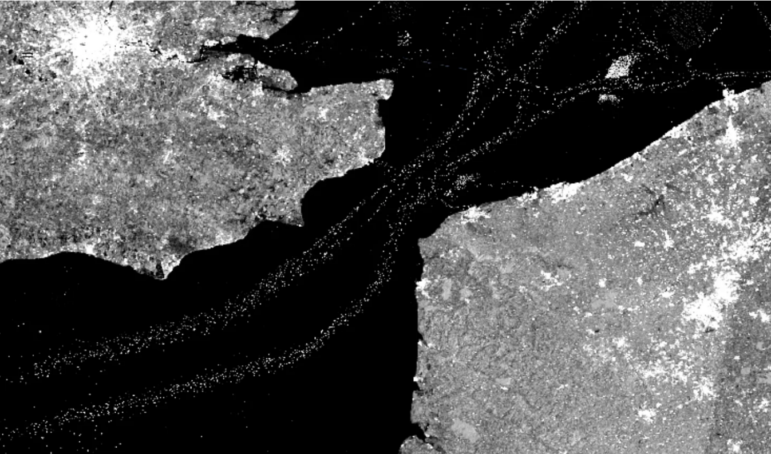
A satellite view of 2023 in the busy English Channel, where shipping lanes are clearly visible. Image: Composite using Sentinel-1 in Google Earth Engine
As in many other investigative domains, satellite imagery is an indispensable resource for tracking oil and gas. We have used satellite imagery to verify the arrival of equipment at a port and to confirm ship-to-ship transfers at sea.
Remote sensing also includes radar imagery which can penetrate clouds. Bellingcat researchers have done extraordinary work using radar imagery to plot tanker arrivals at berths linked to the transfer of sanctioned oil. We have also used synthetic aperture radar to create some beautiful images of shipping lanes at some of the world’s oil choke points.
These images belie the harms to people, planet, and — often — politics caused by the illicit and opaque dealings of the fossil fuels industry. But with the right tools, it is possible to connect the dots.

